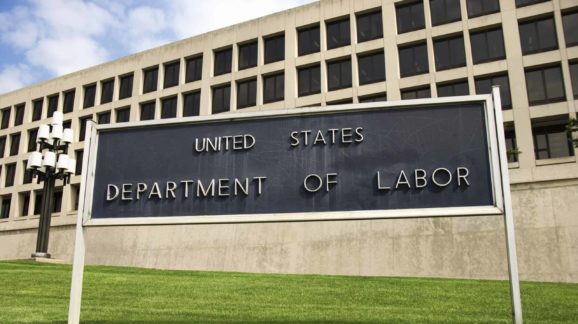DOL On Independent Contractor Rule: We Were Wrong but We Cannot Explain Why

Photo Credit: Getty
The Biden administration put the Department of Labor (DOL) in the awkward position of having to withdraw its new rule regarding when workers are contractors—that is, freelancers—and not employees. Unfortunately for DOL, it couldn’t just say, “Look this was a Trump administration rule and Biden folks don’t like it,” even though that is the case. Federal rulemaking procedures require the department to publicly say, “Actually, on second thought, this was a bad idea” and then explain why.
That can be tricky if the rule in question was a fairly simple and sensible one, like the Trump one. As I noted in my comment letter to DOL on behalf of the Competitive Enterprise Institute, the arguments the Department used to justify its withdrawal don’t stand up to scrutiny.
The rule was meant to provide a clearer definition of “employee,” as opposed to a contractor. The existing language of the Fair Labor Standards Act doesn’t have one. Instead, it uses six factors that indicate if a worker might be an employee. However, none of the six indicators are definitive, so bureaucrats and courts often have to decide on a case-by-case basis. The Trump administration rewrote the rule to have it focus in two “core” factors: How much control does the worker have over his or her work and what is the worker’s “opportunity for profit or loss”—that is, how much can they make or lose by doing the work?
The Trump administration rule created a straightforward guideline: If the worker is the one deciding when to work and if the worker is in control of much he or she makes by doing it, then the worker is probably a contractor.
This is an important issue because workers are covered by federal labor law on things like overtime and health insurance, while contractors are not. Some freelance workers like the freedom this affords. Most so-called gig-economy companies, such as rideshare companies Uber and Lyft, use contractors exclusively because they can work irregular hours and with little scheduling. Critics, mainly unions, contend that businesses often misclassify workers as contractors to circumvent labor laws.
Not coincidentally, contractors are also harder to organize because federal labor law was written with employees in mind. Unions hated the two-factor rule because it implied that most gig economy workers are contractors. So, the Biden administration decided to roll it back.
The DOL identified three main concerns regarding the final rule to justify its withdrawal:
- The rule is too narrow because it uses only two core factors to determine independent contractor status;
- The rule still does not provide sufficient clarity regarding independent contractor status; and,
- The rule will not be economically beneficial to workers.
It was pretty weak stuff. For example, DOL said that focusing on two factors would “improperly narrow the application of the economic realities test,” because courts have said the Department must consider “the totality of the circumstances.” However, the Department conceded that while the new rule emphasizes two core factors, it includes five economic realities factors overall and requires that “all circumstances must be considered.”
One factor—the worker’s investment in the job—was dropped from the existing six on the grounds that it was already covered by the workers’ “opportunity for profit or loss” and was therefore redundant. Thus, the underlying determining factors remained the same under the new rule. The Department’s objection to the new rule boiled down to its elevation of two factors above the rest. The Biden administration offered no explanation as to why those two factors weren’t more significant than the others.
The administration then argued that the Trump rule would “cause confusion or lead to inconsistent outcomes rather than provide clarity or certainty, as intended.” This claim contradicted DOL’s prior concern that the final rule was “improperly narrow.” DOL could not explain how having the courts focus on two core factors would result in more confusion and disparate outcomes than having them focus on six separate factors.
The administration also contended that “this more limited articulation has not generally been applied by courts or WHD [DOL’s Wage and Hour Division] and would thus be unfamiliar to employers, workers, courts, and WHD.” Yeah, but that’s how all rulemakings work. They are initially unfamiliar and require the courts and others to adjust. It is hard to see the Biden administration accepting the “unfamiliarity” argument as a reason to halt any of its own future rulemakings.
Finally, DOL said it “does not believe the Rule fully considered the likely costs, transfers, and benefits that could result from the Rule.” The only evidence that DOL cites for these likely costs was an analysis by the nonprofit Economic Policy Institute (EPI). However, DOL conceded that the final rule “discussed its disagreements with various assumptions underlying EPI’s estimate and explained its reasons for not adopting the estimate.” DOL does not indicate how the final rule erred in rejecting the EPI estimate. Instead, it states, “These impacts can be significant and must be evaluated further.” Okay, but how is, “We should continue to learn more,” a rationale for withdrawing a finished rule?